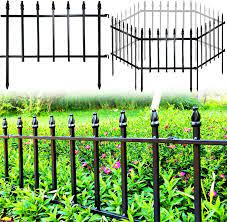Above their useful power, fences keep significant symbolic relevance in man communities, symbolizing principles of possession, identity, and interpersonal limitations. As actual manifestations of limitations, fences shape our perceptions of place and effect our interactions with all the constructed atmosphere. Let’s explore the further significance behind fences (ploty) and discover why they are not only structures—they are icons of man traditions and culture.
1. Ownership and Territory:
Fences symbolize possession and territorial restrictions, marking in which 1 home comes to an end and the other commences. By understanding borders, fences establish a feeling of ownership and control over terrain, strengthening individual or combined personality. In countryside regions, fences serve as perceptible markers of property management, delineating areas, pastures, and house outlines. In urban configurations, fences demarcate individual house from community area, asserting possession and exclusivity.
2. Sociable Department and Exclusion:
fences (ploty) could also symbolize interpersonal divisions and exclusions within modern society. Higher surfaces and limitations may symbolize divorce and inequality, creating physical barriers that split residential areas based upon socio-economic reputation or some other factors. Alternatively, fences with available gateways and lower wall space symbolize inclusivity and connection, attractive discussion and encouraging feelings of neighborhood. The look and exposure of fences reflect underlying social dynamics and power buildings.
3. Social Identification:
In several cultures, fences carry deep societal value and they are imbued with significance that displays ethnic values and traditions. As an example, in some ethnicities, elaborate fences are emblems of standing and reputation, featuring prosperity and prosperity. In comparison, in other ethnicities, basic and efficient fences might be appreciated for functionality and utilitarianism. Learning the ethnic perspective of fences allows us to take pleasure in their symbolic importance in numerous communities.
4. Mental Boundaries:
Fences can also signify mental boundaries that outline private area and autonomy. By developing actual barriers, fences provide people with a feeling of protection and security, allowing them to create limitations and management use of their personal space. This feeling of boundary management is essential for maintaining mental well-becoming and social partnerships, since it enables visitors to assert their autonomy and safeguard their private restrictions.
5. Ecological Affect:
The proliferation of fences has environmental effects, particularly in organic countryside and animals habitats. Comprehensive fencing can fragment environments and disrupt wild animals corridors, influencing biodiversity and ecosystem health. Nonetheless, eco-pleasant fencing alternate options, including wildlife-helpful designs and permeable barriers, provide solutions that stability man demands with ecological conservation. By lessening their environment footprint, fences can give rise to the preservation of normal countryside and wild animals habitats.
To sum up, fences are not just physical structures they can be symbols that stand for complex social, cultural, and psychological dynamics. As guardians of boundaries, fences shape human being relationships and scenery, reflecting and reinforcing societal beliefs and norms. Understanding the symbolic need for fences improves our knowledge of the created atmosphere and our partnership with all the land.
